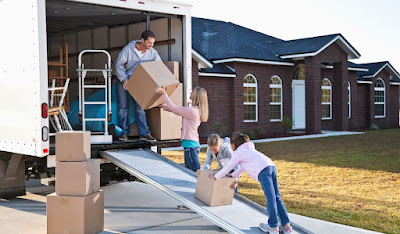Moving is an exciting undertaking for everyone. Getting used to the new house, new neighbors, and all the other changes it entails can sometimes become too much for us. It is even more exciting for children, especially if they have never moved before. It is a completely new experience, and it is difficult for them to understand what is going to happen.
To make it more pleasant and less stressful for everyone in the family, we would like to share 10 tips. This article ensures that the kids can also deal with the situation more easily.
Telling the news at the right time
Take your time and consider when is the best time to let your child know about the move. If you have a toddler, it is sufficient to only give your child an explanation. If you can actually show the house, the new playgroup, etc. Before that, your toddler will not understand what a move really means.
With a somewhat older child, especially towards puberty, it is wise to inform him or her as soon as the plans are concrete. This way, you can also involve your child, making it easier to get used to moving. Also, especially if you are moving far, it can be nice for your child to have enough time to do fun things with his or her friends before the move.
Plan the move during the summer
It is difficult for a small child to get used to a new environment, but certainly also for older children. Getting used to a new environment is easier when the new school year and football season start. It is a new year for everyone at that time, and it is easier to build bonds.
In addition, the chance is very small that your child will be the only "newcomer" in the area. A lot of things always change during the summer holidays, and new classmates are usually added. When you move house in the middle of a school year, it may be difficult for your child to find a nice place in the group and quickly feel at home.
Packing together; make it fun.
Maybe the reason you're moving isn't the nicest. But it is precisely at that moment that it is important to make something fun of it and bring it positively to your child. For example, tell how nice the neighborhood is. And how nice his or her room will be and watch movies together about moving. You may also look more positively at the move in this way if the move does not have a positive cause.
Go packing together with some nice music. Use high-quality protective packaging material that doesn't damage easily. Give your child a little responsibility and small tasks so that he or she also feels involved. Maybe also be a nice idea to decorate your child's moving boxes. This way, the moving boxes are immediately recognized after the move, and unpacking can also be made into a party.
Be positive but also realistic.
For your child, the decision to move will always come as a surprise. Earlier, we indicated to be as positive as possible but don't look away when less positive feelings surface. Both with you and with your child.
Don't run away from these feelings; give your child and yourself space to deal with these feelings. Negative feelings are also part of living and moving, but it is important not to get stuck in them. After expressing these feelings, it is important to close them with a smile and end it positively. Arrange a chilled packaging box full of snacks and drinks for your child to make moving fun for them.

Comments
Post a Comment